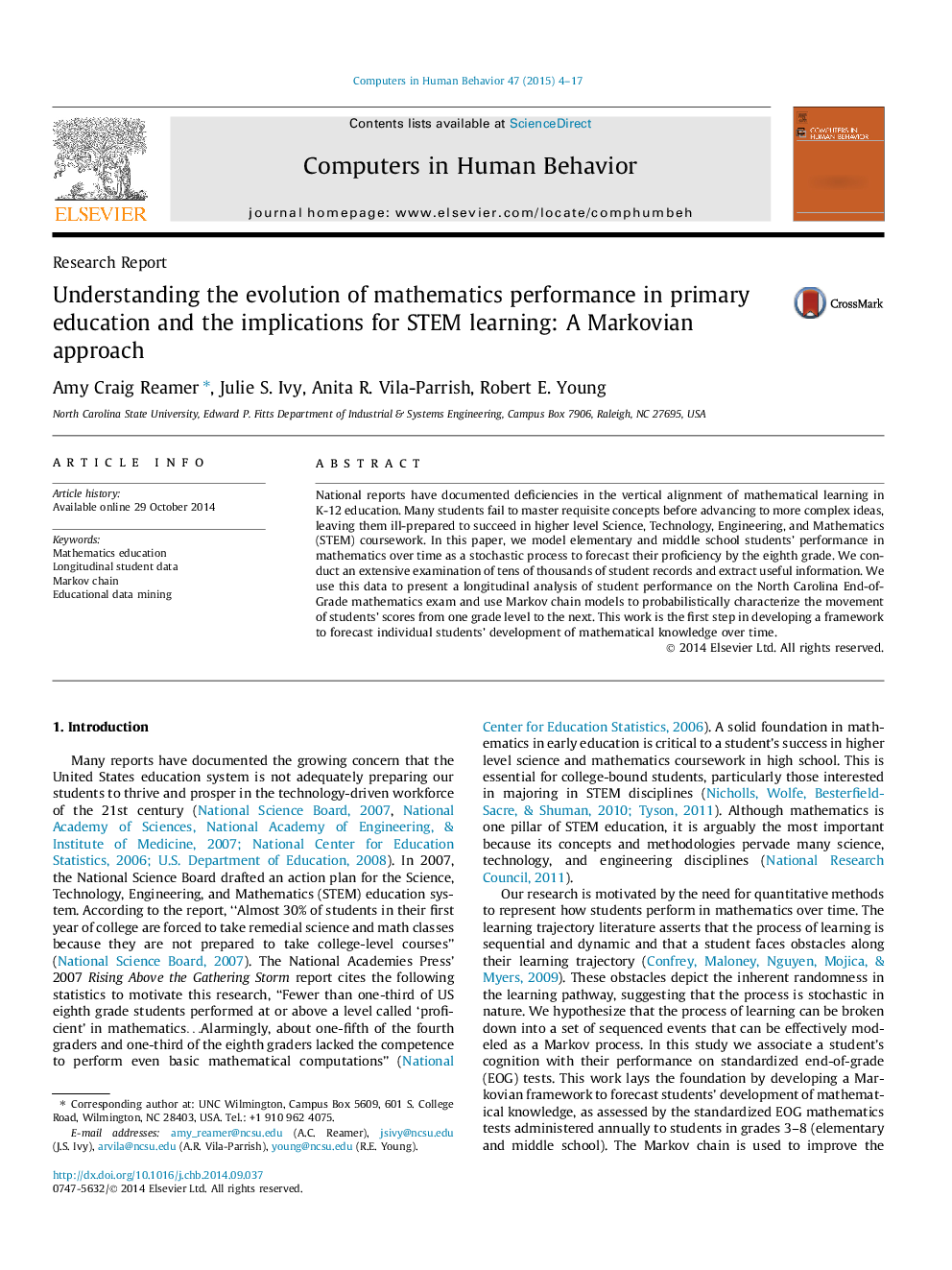| Article ID | Journal | Published Year | Pages | File Type |
|---|---|---|---|---|
| 350256 | Computers in Human Behavior | 2015 | 14 Pages |
•Model students’ performance in mathematics over time as a stochastic process.•Create longitudinal datasets linking student scores on end-of-grade math exams.•Analyze longitudinal datasets based on a variety of demographic factors.•Use Markov chains to probabilistically characterize movement of students’ scores.
National reports have documented deficiencies in the vertical alignment of mathematical learning in K-12 education. Many students fail to master requisite concepts before advancing to more complex ideas, leaving them ill-prepared to succeed in higher level Science, Technology, Engineering, and Mathematics (STEM) coursework. In this paper, we model elementary and middle school students’ performance in mathematics over time as a stochastic process to forecast their proficiency by the eighth grade. We conduct an extensive examination of tens of thousands of student records and extract useful information. We use this data to present a longitudinal analysis of student performance on the North Carolina End-of-Grade mathematics exam and use Markov chain models to probabilistically characterize the movement of students’ scores from one grade level to the next. This work is the first step in developing a framework to forecast individual students’ development of mathematical knowledge over time.
